Where should we look for alien life?
- Published

In the film Interstellar, astronauts leave Earth in search of other habitable planets
Astronomers have discovered a small planet around Proxima Centauri, the closest star to the Sun. But how do astronomers decide whether a planet is hospitable to life?
In the science fiction film Interstellar, external, astronauts leave a dying Earth in search of a hospitable planet for the human race to settle.
But the first two worlds on their shortlist - deemed "potentially habitable" from a distance - turn out to be nightmarishly hostile on closer inspection. The crew's first stop is an ocean planet lashed by 1km-high tidal waves, while the second is a deep-frozen world choked by toxic ammonia.
While Christopher Nolan's movie is fantasy, it draws on a real-life aspect of the work done by astronomers who study exoplanets - worlds beyond our Solar System.
The search for planets capable of supporting life could answer an age-old question: are we alone in the Universe? But what do astronomers mean when they refer to distant worlds as potentially habitable, or Earth-like?
Earth-sized planet orbits neighbouring star
"When we say 'potentially habitable' exoplanets, that's a term that refers to measurable qualities of a planet that are necessary for habitable conditions," says Prof Abel Méndez, from the University of Puerto Rico (UPR) at Arecibo.
These are, then, promising targets where nothing is guaranteed. But two criteria dominate popular discussions of planetary habitability: first, whether it is within Earth's general size range (and therefore has a chance of being rocky) and, second, whether it resides in what's known as the habitable - or Goldilocks - zone.
This is the range of distances around a host star where there's just enough starlight to keep water in liquid form on a planet's surface. Too close to the star, and the heat will cause water to boil off; too far away and any water will freeze.
These are useful rules of thumb, but a host of factors influence how hospitable planets are. And some are excluded from the conversation because of limitations in technology.

Scientists believe the protective magnetic field around our planet plays a vital role in sustaining life
"As we learn things about what makes the Earth habitable, things like the magnetic field become really important," says Prof Don Pollacco, who researches exoplanets at the University of Warwick, external.
"We can't measure the magnetic field of an exoplanet, so we just forget about it."
But other measurable properties are relevant to the life question. To begin with, most "potentially habitable" exoplanets orbit red dwarfs, the name for a category of stars that are smaller, cooler and dimmer than our Sun.
Red dwarfs are the most numerous star type - making up some 75% of stars in our galaxy - but that's by-the-by. The main reason they predominate is that it's easier to find low-mass planets there.
Astronomers hunt for exoplanets in two principal ways: the radial velocity - or wobble - method relies on detecting the gravitational pull a planet exerts on its host star, while the transit method makes use of the dip in brightness when a planet crosses in front of its star.
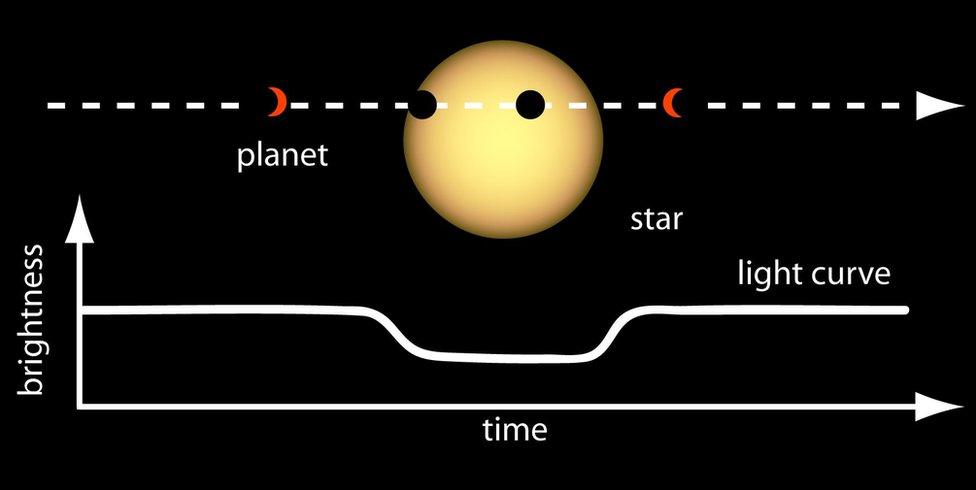
The transit method for detecting exoplanets uses the dip in brightness when a planet crosses the face of its star
For the wobble method, it's easier to detect a small planet tugging on a similarly small star, than tugging on an object many times its size.
In the transit method, a small exoplanet passing in front of a small red dwarf blocks out more of that star's light, while the signal of an Earth-sized world passing in front of a bigger, brighter Sun-like star will be drowned out by its glare.
But because red dwarfs are dimmer than the Sun, planets need to be located closer in order to receive sufficient energy for water to pool.
The nearer a planet is, the stronger the tidal forces exerted by the host star. This can cause the world to be tidally locked, which means the time it takes to spin on its own axis equals the time taken to complete a revolution of its star. Tidally locked planets always present the same side towards their stars.
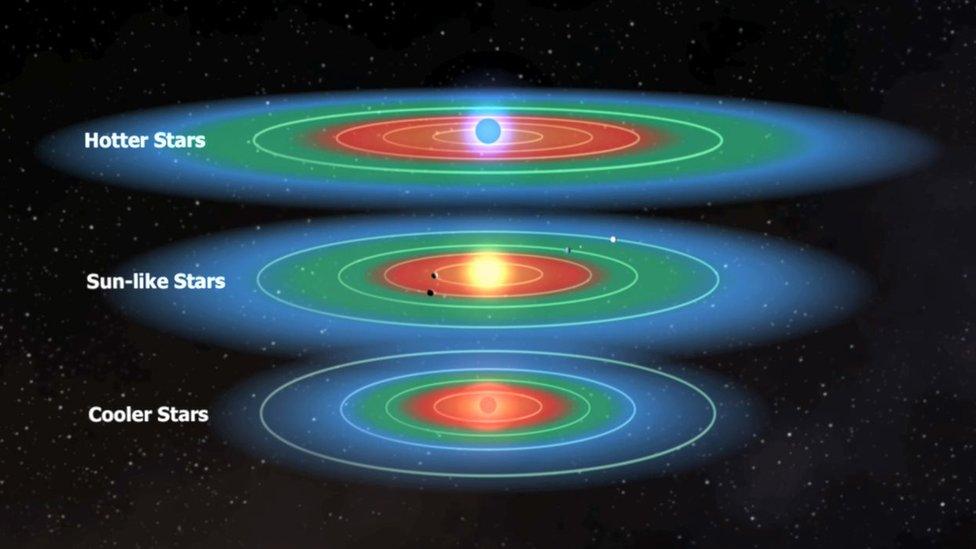
The cooler the star, the closer in their habitable zones have to be
The Moon is tidally locked to the Earth, explaining why we always see the same "face". Unlike the Moon, planets tidally locked to their stars would have a permanent day side and a permanent night side.
"The only way heat can get to the cold side is either through the planet itself or through an atmosphere if it has one. Some people have postulated - if it's hot on one side and cold on the other, somewhere in the middle there must be a temperate zone," Don Pollacco explains.
"Stand five feet one side and you get fried, stand five feet the other side and you freeze," he jokes.
A range of opinions exist on the likely effects of tidal locking on habitability. But lower mass stars tend to be more violent and unpredictable than their more imposing counterparts.
Prof Pollacco and colleagues from Warwick, Queen's University Belfast and Denmark's Aarhus University have studied some of the habitable systems discovered by Nasa's Kepler space telescope, external.
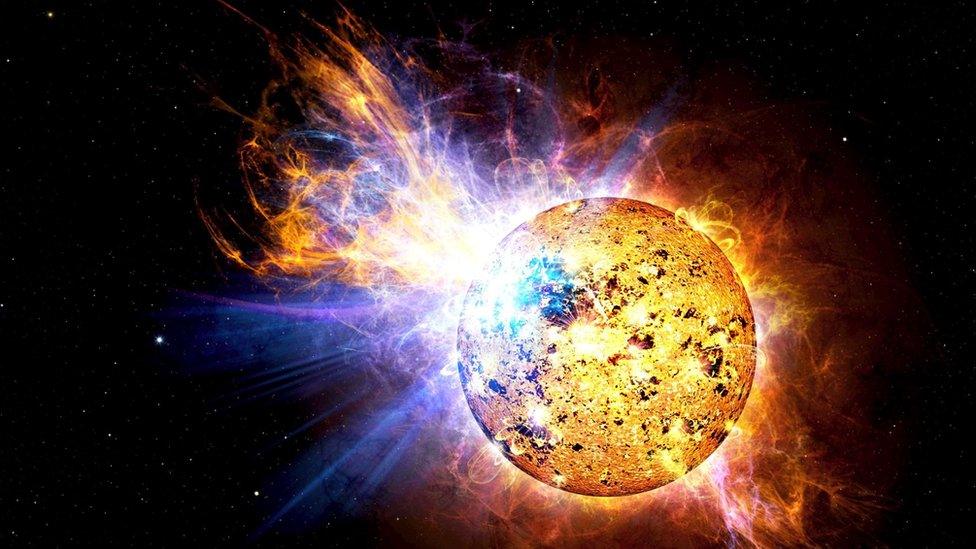
Superflares: Nothing to do with Saturday Night Fever
They found that one host star, Kepler -438, produced "superflares", external - bright outbursts which can hurl torrents of charged particles into space. Scientists think these giant eruptions could strip away the atmospheres of nearby planets and barbecue any life that happened to be on the surface.
But Don Pollacco comments: "On Earth, we have life in rocks and 20,000ft under the sea… If you're that much closer to a major flare, you're going to know about it. What that means is you have to evolve in a different way."
"We've got one system we know where life is and we're using that as our exemplar... but we have used this reasoning before and found things we didn't expect to find. Going in armed with a vision of life as it is here on Earth is likely to be wrong."
Dr Jon Jenkins, a co-investigator on the Kepler mission, echoed this view, saying the jury was still out on whether life was more likely to arise in the habitable zones of low-mass stars or those of brighter stars like the Sun.
"In the search for life we really need to be turning over every rock, to see what crawls out," he told BBC News.
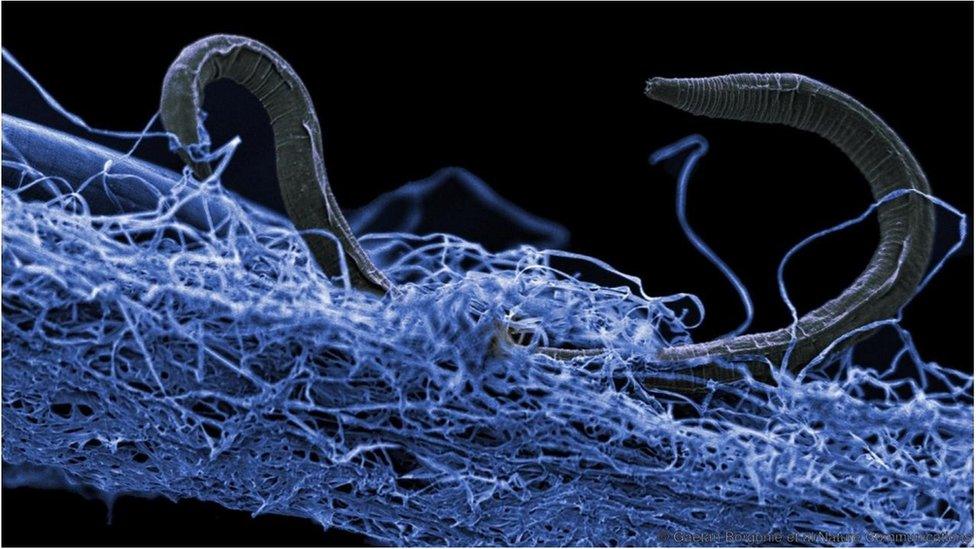
Life forms that can tolerate conditons deep in the Earth may provide clues to biology elsewhere in our galaxy
Prof Abel Méndez, who leads the Planetary Habitability Laboratory at UPR, external, says the new planet around Proxima Centauri - which is a red dwarf star - could act as a testbed for different theories.
"If we eventually find out that these stars are so bad for life, it means that 75% of stars in our galaxy are no good… That's useful to know."
But not all the potential targets for life orbit dim, low-mass stars. In 2015, Nasa announced the discovery by Kepler of a planet somewhat larger than Earth orbiting a star belonging to the same class as the Sun, and with an orbital period very similar to that of our own planet - 385 days.
It's not surprising many think Kepler-452b is the closest match to Earth yet, but Dr Jenkins says the team had to work hard to make their detection.
First, they had to account for data "noise" coming from their sample of Sun-like stars, which turned out to be twice as active as expected. But they also had to contend with interference in the images, which was caused by the way the telescope's main instrument responded to the heat environment aboard the spacecraft.
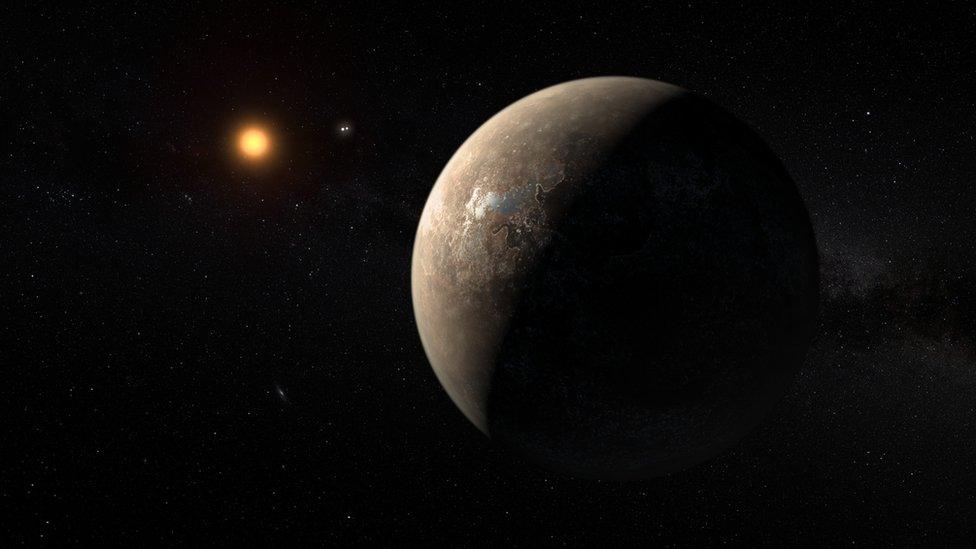
Proxima Centauri b could act as a testbed for theories regarding habitability around red dwarfs
While planets in the habitable zones of Sun-like stars are difficult to detect at present, in time astronomers will almost certainly be able to study a large sample of such systems.
This will be made possible by the suite of ground-based and space-based observatories set to go online in coming decades, including the Europe's PLATO mission, external, Nasa's James Webb Space Telescope, external and the European Extremely Large Telescope (E-ELT), external in Chile.
"It's quite breathtaking to think that 30 years ago - when I was in college - the notion of just detecting an extrasolar planet seemed like science fiction," says Dr Jenkins, from Nasa's Ames Research Center, external in California. "It's going to be very exciting to see what unfolds in the next 30."
One approach to finding life with the next generation of instruments is to look for gaseous signatures of biology, external in exoplanet atmospheres - something Abel Méndez calls "the big next step".
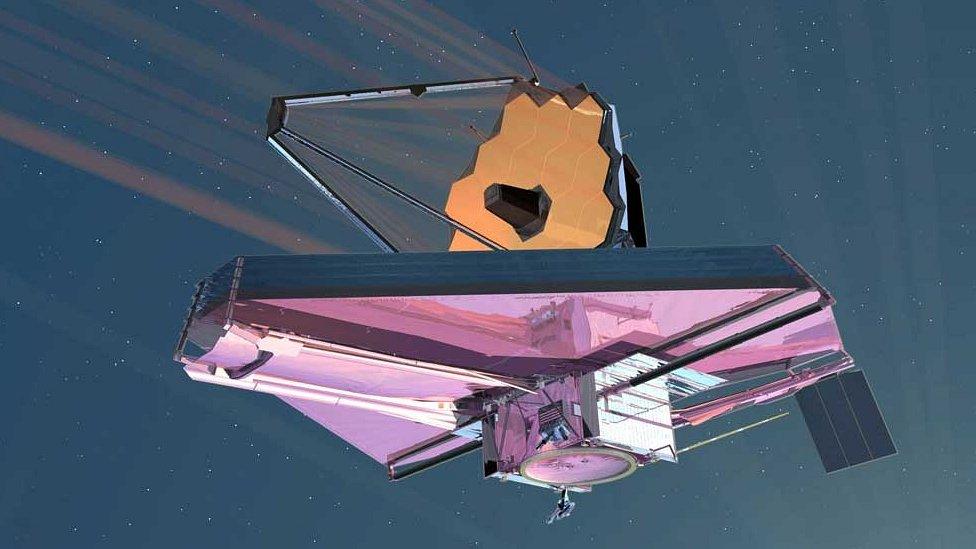
The James Webb Space Telescope could revolutionise our understanding of exoplanets
He says this might allow us "not only to say that the planet is habitable, but also say that it is inhabited". Prof Méndez thinks a signature of oxygen and methane from a habitable zone planet could provide tantalising hints of biology, but says it won't be enough to claim a discovery.
However, a tell-tale sign of life that astronomers can agree on is the presence of gases produced only by artificial means - pollution, in other words. Prof Pollacco calls this "demoralising", but explains: "It must indicate something - probably a technologically capable society."
It's sobering to think that our first indication of intelligent life could come from a civilisation in the process of ravaging its own planet. But there's an upside according to Don Pollacco.
"There'll be someone to talk to eventually that we have something in common with."
Follow Paul on Twitter., external